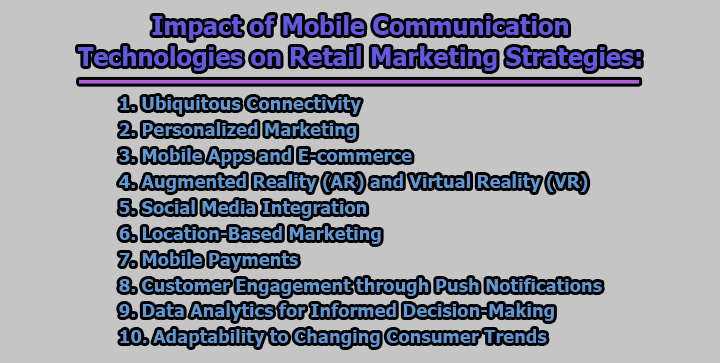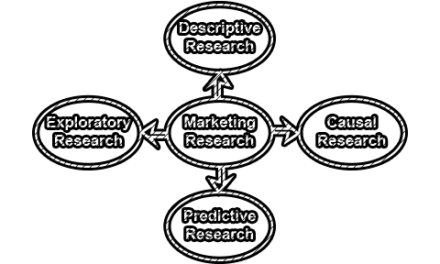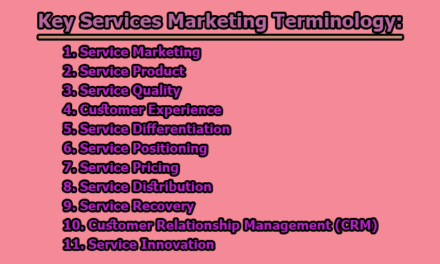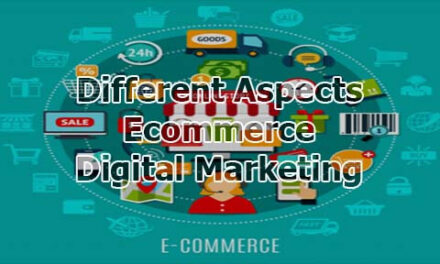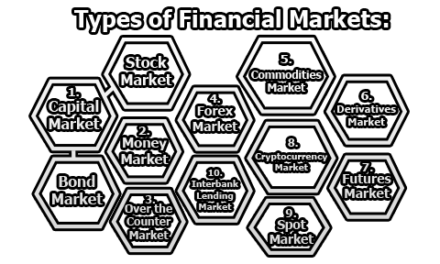Impact of Mobile Communication Technologies on Retail Marketing Strategies:
In the fast-paced world of retail, staying ahead of the competition requires constant adaptation to emerging technologies. One such game-changer has been the widespread adoption of mobile communication technologies. Mobile devices have become an integral part of consumers’ daily lives, presenting a myriad of opportunities for retailers to connect with their target audience and enhance their marketing strategies. In the rest of this article, we will explore the impact of mobile communication technologies on retail marketing strategies.
1. Ubiquitous Connectivity: Mobile communication technologies have fundamentally transformed the way consumers interact with the world, providing unparalleled levels of connectivity. With the widespread adoption of smartphones and the increasing availability of high-speed mobile internet, consumers are virtually always online. This constant connectivity has given rise to a dynamic environment where retailers can engage with their audience in real-time, irrespective of the consumers’ location or time of day. For instance, push notifications, email alerts, and instant messaging apps enable retailers to communicate promotions, product updates, and personalized offers directly to consumers’ mobile devices, ensuring that the brand remains at the forefront of the consumers’ minds.
2. Personalized Marketing: Mobile communication technologies serve as a treasure trove of consumer data, enabling retailers to implement highly targeted and personalized marketing strategies. Through the analysis of user behavior, purchase history, and location data, retailers can craft individualized marketing messages that resonate with consumers on a personal level. For instance, a retailer can send tailored promotions based on a customer’s previous purchases or use geotargeting to offer discounts when a consumer is in proximity to a physical store. This level of personalization not only enhances the effectiveness of marketing efforts but also fosters a sense of connection between the consumer and the brand, ultimately leading to increased customer loyalty and satisfaction.
3. Mobile Apps and E-commerce: The rise of mobile applications has reshaped the retail landscape, providing a direct and convenient channel for consumers to interact with brands. Retailers can develop dedicated mobile apps that offer a seamless and personalized shopping experience. These apps not only showcase products but also provide features such as one-click purchasing, personalized recommendations, and order tracking. The prevalence of mobile commerce has further transformed the way consumers make purchases, allowing for a quick and efficient transaction process directly from the convenience of their smartphones. Retailers investing in user-friendly and feature-rich mobile apps can significantly enhance customer engagement and drive sales through the mobile channel.
4. Augmented Reality (AR) and Virtual Reality (VR): The integration of augmented reality (AR) and virtual reality (VR) into mobile communication technologies has brought about a paradigm shift in the way consumers experience products. Retailers can leverage AR and VR to create immersive and interactive shopping experiences. For example, through AR, consumers can use their mobile devices to virtually try on clothing or visualize how furniture would look in their homes before making a purchase. This not only adds a new dimension to the online shopping experience but also addresses common challenges associated with e-commerce, such as the inability to physically interact with products before buying.
5. Social Media Integration: The convergence of mobile communication technologies with social media platforms has redefined how retailers engage with their audience. Social media has become an integral part of consumers’ lives, and retailers can capitalize on this by integrating shopping functionalities directly into social media platforms. By leveraging features like “shoppable posts” and direct purchasing options, retailers can seamlessly guide consumers from product discovery to purchase within the social media environment. Additionally, social media serves as a powerful tool for building brand awareness, fostering community engagement, and harnessing user-generated content, further solidifying the brand-consumer relationship. The synergy between mobile technology and social media empowers retailers to reach a broader audience and create a more interactive and socially-driven shopping experience.
6. Location-Based Marketing: Mobile communication technologies enable retailers to implement location-based marketing strategies, tailoring promotional efforts based on consumers’ geographic proximity. Through geotargeting, retailers can send targeted push notifications or exclusive offers to consumers when they are in the vicinity of a physical store. This real-time and location-specific engagement not only encourages foot traffic but also enhances the overall shopping experience. For instance, a retailer can send a special discount code to a customer’s mobile device when they are near a store, enticing them to make an immediate in-store purchase.
7. Mobile Payments: The advent of mobile payment technologies has revolutionized the checkout process, offering consumers convenient and secure ways to make transactions. From mobile wallets to contactless payments, consumers now expect retailers to provide a variety of payment options that align with their preferences. Retailers embracing these technologies not only streamline the payment process but also cater to the growing demand for efficient, cashless transactions, ultimately contributing to an enhanced overall shopping experience.
8. Customer Engagement through Push Notifications: Mobile apps empower retailers to engage with their customers through push notifications, delivering timely and relevant information directly to users’ devices. Retailers can use push notifications to announce new product launches, alert customers to ongoing promotions, or provide updates on order statuses. This direct form of communication keeps the brand in the forefront of consumers’ minds and encourages them to take immediate actions, such as revisiting the app or making a purchase, thereby increasing customer engagement and interaction.
9. Data Analytics for Informed Decision-Making: The vast amount of data generated by mobile communication technologies offers retailers valuable insights into consumer behavior, preferences, and trends. By employing advanced analytics tools, retailers can derive actionable insights from this data, enabling informed decision-making. For instance, retailers can analyze mobile app usage patterns, track conversion rates, and identify popular products, allowing them to optimize marketing strategies, inventory management, and overall business operations. The integration of data analytics into the decision-making process enhances retailers’ ability to stay agile and responsive to changing market dynamics.
10. Adaptability to Changing Consumer Trends: Mobile communication technologies facilitate retailers’ adaptability to evolving consumer trends and preferences. With the rapid pace of technological innovation, retailers must stay attuned to emerging trends in mobile usage, consumer behavior, and market dynamics. By monitoring these changes and leveraging new technologies as they emerge, retailers can stay ahead of the curve. This adaptability is crucial for maintaining relevance in the competitive retail landscape, ensuring that marketing strategies remain effective and aligned with the expectations of an ever-changing consumer base.
In conclusion, mobile communication technologies have fundamentally transformed the landscape of retail marketing. From personalized experiences to immersive technologies, retailers are now equipped with a diverse set of tools to engage with their audience and drive business growth. As technology continues to evolve, retailers must remain agile, embracing innovations that align with changing consumer preferences. By harnessing the power of mobile communication technologies, retailers can not only stay ahead of the curve but also create more meaningful and seamless experiences for their customers.
Frequently Asked Questions (FAQs):
How has the widespread connectivity influenced retail marketing strategies?
The pervasive connectivity offered by mobile communication technologies has revolutionized retail marketing, enabling real-time engagement with consumers. Retailers can now connect with their audience at any time and place through push notifications, personalized messages, and location-based promotions, fostering continuous brand-consumer interactions.
In what ways do retailers leverage personalized marketing through mobile communication technologies?
Retailers utilize the abundant consumer data available through mobile devices to implement personalized marketing strategies. By analyzing user behavior, purchase history, and location data, retailers customize promotions, offers, and advertisements to individual preferences, creating a more relevant and engaging experience for each customer.
How have mobile apps and e-commerce transformed the retail landscape?
The emergence of mobile applications has provided retailers with a direct and user-friendly channel to engage consumers. Mobile apps facilitate seamless and personalized shopping experiences, offering features like one-click purchasing, personalized recommendations, and order tracking. This has significantly reshaped the retail landscape, making it more convenient for consumers to browse, purchase, and interact with brands.
What role do augmented reality (AR) and virtual reality (VR) play in retail marketing through mobile devices?
AR and VR technologies integrated into mobile communication devices offer retailers innovative ways to engage consumers. By allowing virtual try-on experiences or visualizing products in real-world settings, these technologies enhance the online shopping experience, addressing common challenges associated with e-commerce, such as the inability to physically interact with products before purchasing.
How does social media integration contribute to retail marketing strategies through mobile communication technologies?
Social media integration has become a cornerstone of modern retail marketing. Retailers leverage mobile technology to seamlessly integrate shopping functionalities into social media platforms. This approach not only facilitates direct purchasing but also enables retailers to build brand awareness, engage with consumers, and harness user-generated content to create a more interactive and socially-driven shopping experience.
What is the significance of location-based marketing in retail through mobile communication technologies?
Location-based marketing, enabled by mobile devices, allows retailers to send targeted promotions or notifications based on a consumer’s geographic location. Through geotargeting, retailers can enhance the shopping experience by providing real-time, location-specific offers, driving foot traffic to physical stores and encouraging immediate engagement with the brand.
How have mobile payments impacted the retail checkout process?
Mobile payment technologies, such as mobile wallets and contactless payments, have revolutionized the retail checkout process. Consumers now expect convenient and secure payment options. Retailers adopting these technologies not only streamline the payment process but also cater to the growing demand for efficient, cashless transactions, contributing to an enhanced overall shopping experience.
In what ways do push notifications contribute to customer engagement in retail marketing?
Mobile apps empower retailers to engage with customers through push notifications, delivering timely and relevant information directly to users’ devices. These notifications can include announcements of new products, ongoing promotions, or order updates, fostering immediate interaction and increasing customer engagement with the brand.
How does data analytics play a role in shaping retail marketing strategies using mobile communication technologies?
The vast amount of data generated by mobile communication technologies provides retailers with valuable insights into consumer behavior and preferences. By employing data analytics tools, retailers can make informed decisions about marketing strategies, inventory management, and overall business operations, ensuring they stay agile and responsive to changing market dynamics.
Why is adaptability to changing consumer trends crucial for retailers utilizing mobile communication technologies?
Mobile communication technologies evolve rapidly, and retailers must stay adaptable to emerging trends. Monitoring changes in mobile usage, consumer behavior, and market dynamics allows retailers to leverage new technologies as they emerge, ensuring their marketing strategies remain effective and aligned with the expectations of an ever-changing consumer base.
References:
- Chung, J. E. (2017). The impact of augmented reality (AR) and virtual reality (VR) on marketing. In Proceedings of the European Conference on Information Systems (ECIS).
- Gupta, S., Venkatesh, R., & Mahajan, V. (2018). Mobile marketing: A synthesis and prognosis. Journal of the Academy of Marketing Science, 46(1), 3-27.
- Hood, N., Urquhart, R., Newing, A., & Heppenstall, A. (2020). Sociodemographic and spatial disaggregation of e-commerce channel use in the grocery market in Great Britain. Journal of Retailing and Consumer Services, 55, 102076. https://doi.org/10.1016/j.jretconser.2020.102076
- Smith, A. N. (2019). Mobile consumer engagement: A review and research agenda. Journal of the Academy of Marketing Science, 47(3), 384-404.
- Jha, S., Balaji, M. S., Peck, J., Oakley, J., & Deitz, G. D. (2020). The Effects of Environmental Haptic Cues on Consumer Perceptions of Retailer Warmth and Competence. Journal of Retailing, 96(4), 590-605. https://doi.org/10.1016/j.jretai.2020.04.003

Library Lecturer at Nurul Amin Degree College

